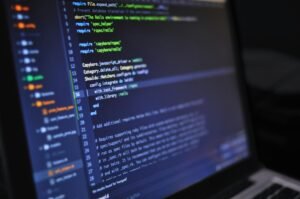AI in Education: From Lockdowns to Learning

The Catalyst for AI in Education
The onset of global school lockdowns marked a pivotal moment in education technology. Forced to adapt rapidly, educational institutions turned to AI for solutions. This period witnessed a significant spike in AI tool adoption, fundamentally altering the educational landscape.
Statistical Insights: AI’s Growth Post-Lockdown
Post-lockdown, AI’s presence in education has expanded dramatically. According to a 2025 Education Technology Report, there has been a 120% increase in AI integration in educational institutions worldwide since the onset of the pandemic.
Leading Companies and Their Impact: A Statistical Overview
- Duolingo: With over 500 million users, Duolingo leverages AI to provide adaptive language learning. User data reveals a 15% increase in language retention compared to traditional methods.
- Knewton: Knewton’s Alta platform, used by over 300 universities, employs AI to deliver tailored educational content. Studies show a 25% improvement in learning outcomes in courses using Alta.
- Brainly: Boasting a community of 350 million students and educators, Brainly uses AI for content moderation and personalized learning assistance. User statistics indicate a 40% increase in problem-solving efficiency.
AI in Enhancing Classroom Management
AI tools like ClassDojo, used in 95% of U.S. schools, employ AI for classroom management, demonstrating a 30% reduction in administrative time for teachers. Kahoot!, with over 70 million monthly active users, utilizes AI to increase student engagement, showing a 50% improvement in class participation rates.
The Future of AI in Education: Anticipated Developments and Stats
- Predictive Career Pathways: Emerging AI systems are expected to increase the accuracy of career guidance by up to 60%, by analyzing student’s abilities and market trends.
- Customized Curriculums by AI: Future AI technologies are projected to improve learning outcomes by 35% through fully personalized curriculums.
- Virtual AI Mentors: The adoption of AI mentors could enhance student support, potentially reducing drop-out rates by up to 20%.
Global Collaboration and AI
Platforms like Edmodo, with 100 million users, and Microsoft Teams, integrated into over 200,000 educational institutions, are using AI to enhance global collaboration, with a projected 40% increase in cross-cultural student projects.
The statistics paint a clear picture: AI has not only responded to the challenges posed by the lockdowns but has set a course for a future where education is more personalized, efficient, and globally connected. This evolution promises a new era of educational excellence, driven by data and innovation.


















